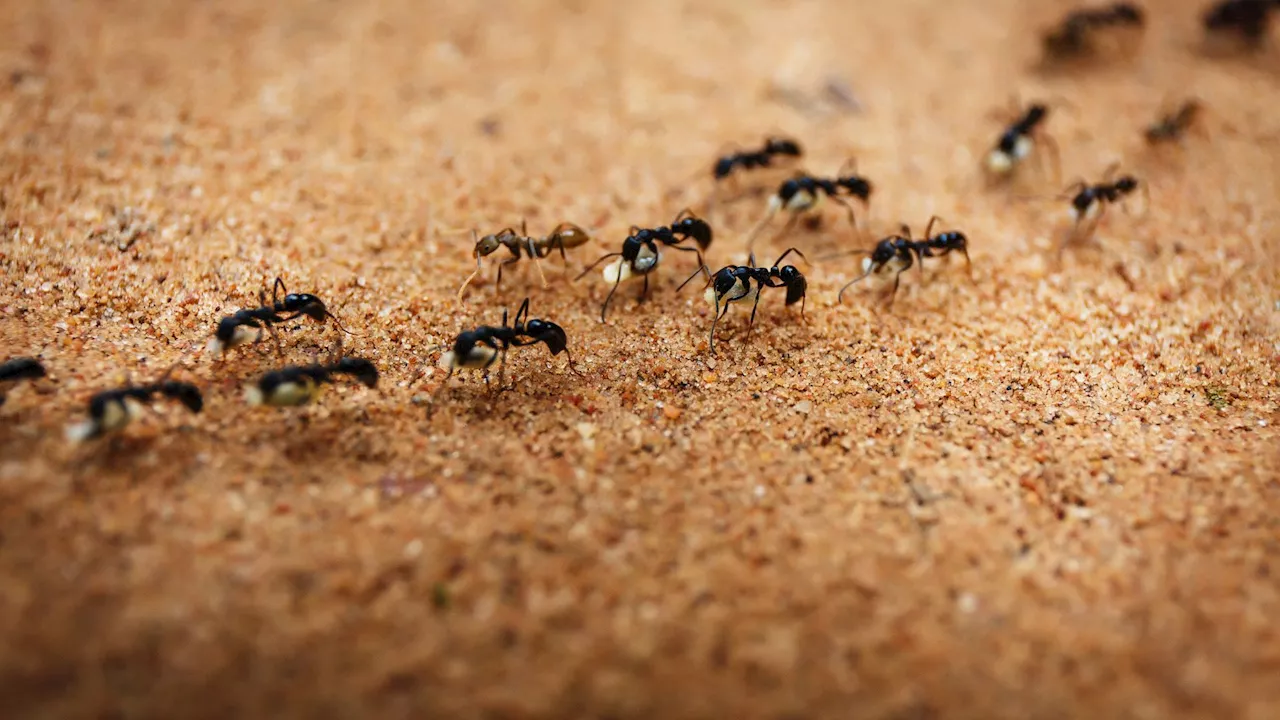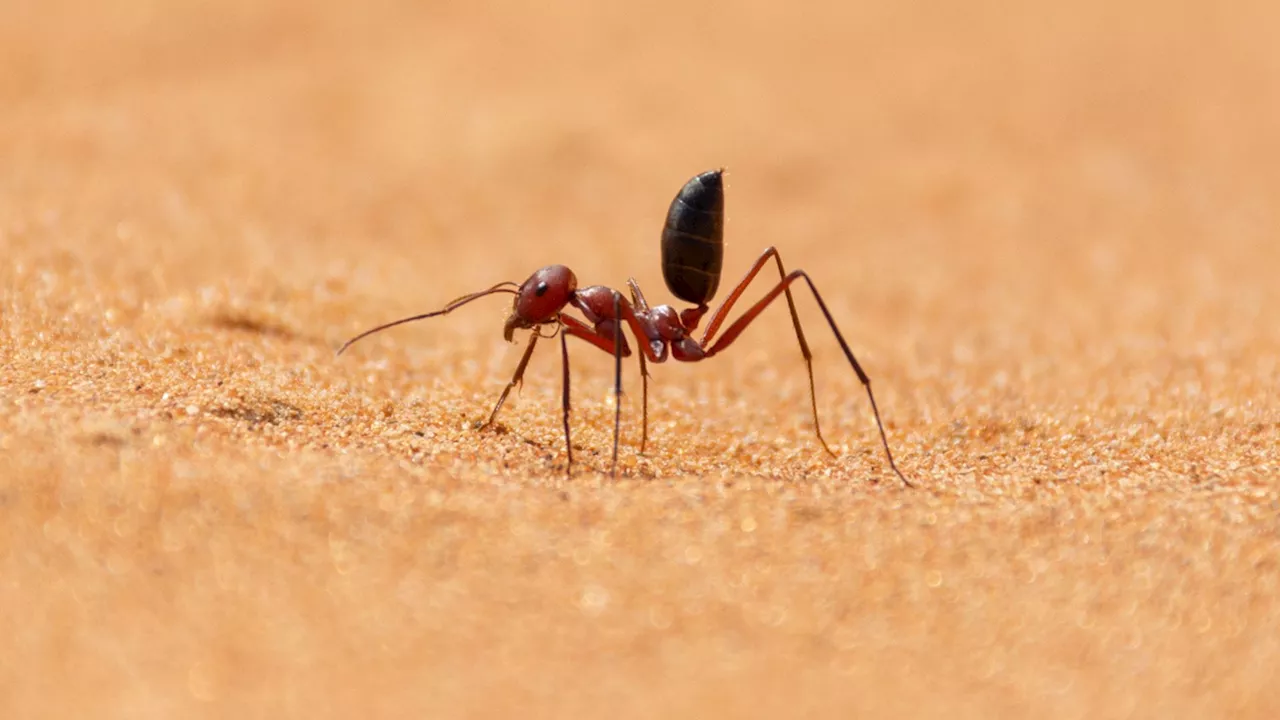Evolutionary biologists have found that ants learn from past experiences and remember attacks from specific nests, leading to increased aggression towards those ants in future encounters.
Evolutionary biologists are investigating how much ants learn from past experiences. After being attacked by ants from a particular nest, ants behave more aggressively towards others from that same nest. A team led by evolutionary biologist Volker Nehring is investigating the extent to which ants learn from past experiences. Ants learn from experience.
This has been demonstrated by a team of evolutionary biologists from the University of Freiburg, led by Dr Volker Nehring, research associate in the Evolutionary Biology and Animal Ecology group, and doctoral student Mélanie Bey. The researchers repeatedly confronted ants with competitors from another nest. The test ants remembered the negative experiences they had during these encounters: when they encountered ants from a nest they had previously experienced as aggressive, they behaved more aggressively towards them than towards ants from nests unknown to them. Ants that encountered members of a nest from which they had previously only encountered passive ants were less aggressive. The biologists published their results in the journal Ants use odours to distinguish between members of their own nest and those from other nests. Each nest has its own specific scent. Previous studies have already shown that ants behave aggressively towards their nearest neighbours in particular. They are especially likely to open their mandibles and bite, or spray acid and kill their competitors. They are less likely to carry out such aggressive manoeuvres against nests that are further away from their own. Until now, it was unclear why this is the case. Nehring's team has now discovered that ants remember the smell of attackers. This is why they are more aggressive when confronted with competitors from nests they are familiar with.The scientists conducted an experiment in two phase
ANTS LEARNING MEMORY AGGRESSION NEUROBIOLOGY
United States Latest News, United States Headlines
Similar News:You can also read news stories similar to this one that we have collected from other news sources.
 Source Close to Bill Belichick Says UNC Move Was ‘Big (Expletive) You to NFL’Belichick had become 'disgusted' with what the NFL had become, according to a report
Source Close to Bill Belichick Says UNC Move Was ‘Big (Expletive) You to NFL’Belichick had become 'disgusted' with what the NFL had become, according to a report
Read more »
 Desert ants use the polarity of the geomagnetic field for navigationDesert ants of the Cataglyphis nodus species use the Earth's magnetic field for spatial orientation, but rely on a different component of the field than other insects. The survey suggests that the ants also use a different mechanism for magnetoreception than most insects studied to date, including the famous monarch butterflies.
Desert ants use the polarity of the geomagnetic field for navigationDesert ants of the Cataglyphis nodus species use the Earth's magnetic field for spatial orientation, but rely on a different component of the field than other insects. The survey suggests that the ants also use a different mechanism for magnetoreception than most insects studied to date, including the famous monarch butterflies.
Read more »
NBA Boilers: Dakota Mathias Goes Off in Indiana Mad Ants Win Over Windy City BullsFormer Purdue wing Dakota Mathias had a tremendous G-League performance, scoring 33 points in the Indiana Mad Ants win over the Windy City Bulls.
Read more »
 Magnetic Microrobots Assemble Like Ants to Lift Objects and Navigate Complex TasksSouth Korean researchers have developed tiny magnetic robots that can work together in swarms to perform impressive feats, such as moving and lifting objects much larger than themselves. These cube-shaped microrobots, controlled by a rotating magnetic field, have the potential to revolutionize minimally invasive medical treatments and precise biological manipulation.
Magnetic Microrobots Assemble Like Ants to Lift Objects and Navigate Complex TasksSouth Korean researchers have developed tiny magnetic robots that can work together in swarms to perform impressive feats, such as moving and lifting objects much larger than themselves. These cube-shaped microrobots, controlled by a rotating magnetic field, have the potential to revolutionize minimally invasive medical treatments and precise biological manipulation.
Read more »
 Microrobots Swarm Like Ants, Offer Medical PromiseTiny robots, guided by magnetic fields, can work together like ants, lifting heavy objects and navigating complex environments. This technology holds promise for medical applications like delivering drugs and unclogging blood vessels.
Microrobots Swarm Like Ants, Offer Medical PromiseTiny robots, guided by magnetic fields, can work together like ants, lifting heavy objects and navigating complex environments. This technology holds promise for medical applications like delivering drugs and unclogging blood vessels.
Read more »
 Miniature Polarization Photodetector Inspired by Desert AntsChinese researchers have developed a miniature polarization photodetector inspired by the navigation abilities of desert ants. The device has various potential applications, including navigation, fingerprint detection, cancer tissue identification, and de-hazing images.
Miniature Polarization Photodetector Inspired by Desert AntsChinese researchers have developed a miniature polarization photodetector inspired by the navigation abilities of desert ants. The device has various potential applications, including navigation, fingerprint detection, cancer tissue identification, and de-hazing images.
Read more »
